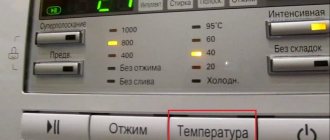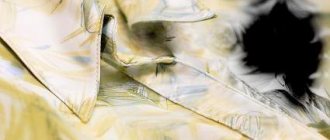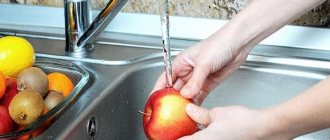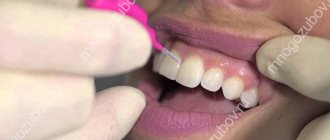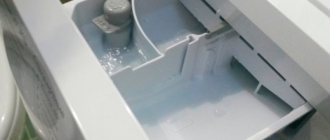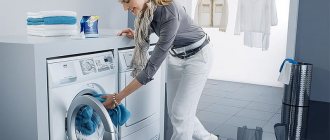During the period of swelling of the buds, Velcro and resin actively fall from the poplars. This sticky yellow substance easily ends up on clothes and shoes. As a result, yellow stains remain on the products, which are quite difficult to remove. They eat firmly and deeply into the fibers of the fabric. However, standard washing will not remove resin, Velcro and greasy marks.
The fact is that the adhesive substance that poplar produces is a chemical polymer compound. It is insoluble in water, alkaline solutions and even some acids. But you can still remove stains from poplar using improvised or special means. Let's find out how to wash poplar from clothes.
How to clean on white soles
Before you begin to salvage the freshness of your appearance, you first need to clean your shoes of excess dirt. Any common shoe care cleanser or simple laundry soap will help with this.
To clean the desired surface, we need a foam sponge, a shoe brush or just an old toothbrush, rubber or silicone gloves, a clean rag, and water.
Let's consider several options for soft, gentle cleaning of the white soles of your favorite shoes using available products that do not have coarse abrasive particles, so as not to damage the material:
The most budget-friendly cleaning method is ordinary baking soda, which is found in every home. It costs literally pennies. But it cleans well, but at the same time carefully, without scratching the surface.
To clean dirt with baking soda, you need to mix it with a small amount of water, turning it into a paste. And with this mixture you need to gently clean the surface in a circular motion, then rinse with water.
Unexpected use of toothpaste. Yes, yes, it can clean not only tooth enamel. It has excellent cleaning properties in relation to many, including various types of rubber and PVC. It should also be applied to the dirty sole of the shoe using a brush soaked in water and left for just a couple of minutes, then cleaned with the same brush and rinsed off under water. This will not only give whiteness to the material, but also give it a fresh aroma.
You can also try peroxide, alcohol, WD40 cleaner, various grease removers, such as SIF, which can help with very fresh stains that have not yet been absorbed or dried.
But the right solution would be to find substances that could chemically react with polymers, dissolving them. You need to carefully apply them on shoes and it is best to try them somewhere in an inconspicuous place and only then, after making sure that the material of the shoes does not deteriorate, use them to remove stains.
Professional products
You can always use special stain removers. They contain components that penetrate deep into the fibers and clean the product in a few minutes. However, in this case, such compositions cannot help every time, although they effectively cope with old and difficult stains and remove stains of grease, food and drinks.
Vanish, Faberlic and Amway products help a lot. These are universal preparations that are suitable for clothing, upholstered furniture and carpets. For white cotton and linen clothing, use chlorine bleach. For non-ferrous materials and synthetics - powders with enzymatic cleaners.
You can use standard laundry soap. It contains an increased number of acids, due to which it can remove fresh yellow and sticky stains. Lather the contaminated area, leave for half an hour and rinse, finally wash in the washing machine or by hand with a suitable powder or gel.
Instead of laundry soap, you can use special Antipyatin soap. This is an inexpensive, safe and accessible product that easily removes various types of contaminants. It does not cause allergies and is even suitable for washing children's clothes. For the best way to wash children's clothes, see the link https://vsepodomu.ru/stirka/luchshee-sredstvo-dlya-detskogo-beliya/.
How to remove stains from poplar Velcro
There is such a substance - sodium hypochlorite, which is the basis of bleach and gives the characteristic “aroma” of bleach.
An even more unexpected use of men's shaving foam. No, this is not a joke. Due to its composition, it has good cleansing properties. It should be applied to the cleaned surface of the sole of the shoes. To achieve the best whitening results, you can use it in combination with baking soda.
The usual and most common type of stain treatment is cleaning the wetted surface with washing powder.
Cleaning the soles of shoes until white, perhaps using alcohol-containing wet wipes intended, for example, for cleaning the inside of a car. In addition, this option is the most convenient if you are away from home and do not have various types of cleaning products, rags, sponges, water, etc. with you.
Mustard powder can be used as a natural powder. To remove contaminants, you need to dilute it with a small amount of water to a paste and rub the contaminants.
The whole point is how long ago poplar Velcro appeared on shoes, the process of removing them depends on this.
If we are talking about one day, then ordinary nail polish remover helped me cope. I did it this way:
Take a medical bandage and fold it in several layers to make a small pad. You need to make 6-8 such pillows.
Blot the pad with nail polish remover and rub it gently over the shoes; no need to rub, as this can smear it even more. As soon as the bandage gets dirty, change it to a new one, otherwise you will smear the Velcro on your shoes.
If more than a day has passed since the contamination, you can still try to wash it off with nail polish remover, but it is best to use brake cleaner. I don’t know about other manufacturers, but I used WURTH, the cleaner is under pressure, so just pour it on the shoes, and then after a while, as the Velcro has corroded, remove the liquid with a bandage or, if you don’t mind the liquid, rinse it under pressure again.
Spilled coffee, coffee grounds - this is another eco-friendly method for dealing with dirt embedded in the sole.
Cause of problem spots
In the past, many residents planted large numbers of linden and poplar trees in their yards.
This was done for the purpose of landscaping the yard, so that in hot summer weather you could enjoy the shade and coolness under a tree in your yard. No one expected that over time these trees would create so much inconvenience. With the arrival of spring, almost all the benches, sidewalks, curbs, windows, and cars acquired strange yellow spots in which the yard children were quickly busy.
Once on the fabric, the juice of linden and poplar buds strongly ate into it due to its sticky structure, which made all attempts to clean the fabric from these stains almost ineffective. For many housewives, this is a serious problem, because not everyone knows how to wash poplar buds from clothes.
Car enthusiasts are luckier, because many car shops, car washes and showrooms sell products that are applied to the body in order to maximally prevent the “sticking” of tree buds; when washing, they are easily removed from the body.
Traces that have become embedded in the fabric or varnish of a car body are very difficult and sometimes almost impossible to remove. Washing and powder soaking the clothes will not help; simply rubbing with a rag will not clean the body.
Remove tree resin from shoes
Tree resin is no less insidious than road bitumen, and during the picnic season it is very popular, because you can find it in hair, on clothes, and on shoes. The composition of wood Velcro differs from road Velcro, so the methods for removing it are different, but no less accessible.
- Tree resin heats up in the sun and flows down the trees. You can remove it from your shoes in the same way - by applying heat. Place a paper napkin on the tarred area. Turn on the hairdryer and heat the rosin with hot air. When the wood Velcro becomes soft, it can be easily removed with a napkin. You can also use an iron.
- Oil stains can be removed with acetone nail polish remover. Degrease tar stains with hydrogen peroxide. Then soak a cotton swab or piece of white cloth in acetone and wipe off the resin. For colored and suede shoes, use nail polish remover without acetone.
- You can use mineral water to clean delicate shoes. Dampen the tar stains with mineral water or soak the shoes completely in water. Soak the shoes in mineral water for 30 minutes, then rub the resin with a brush, it should come off.
- Black leather and suede shoes can be revived with regular Coca-Cola. This method is only suitable for dark shoes. Soak the resinous areas in a sweet drink for 40 minutes, then rinse in cold water until the resin is completely gone. Before drinking a carbonated drink, cool it in the refrigerator for half an hour.
- You can also clean the resin with soda and vinegar. Degrease stains with peroxide and wipe dry. Sprinkle the resin with baking soda and add vinegar. When the baking soda stops fizzing, wash your shoes in warm water.
Nitric acid
Nitric acid is the most effective way to remove linden from clothes. But due to its properties harmful to the human body, it should not be used for these purposes.
Hydrobromic acid
This tool can also quickly and easily solve the problem. But for the same reason as nitric acid, it is not used in this case.
Acetone
This product will help remove unattractive stains from clothes without harming human health. Of course, the last condition is only possible if the safety rules when working with acetone are observed.
TAKE CARE OF YOUR FEET
Walking four-legged pets also brings inconvenience. The dog comes home with a thick layer of poplar buds on his paws. Fortunately, they do not cause any harm to the animal’s health, but they are difficult to clean, plus they leave sticky stains on the floor.
“Bathing in simple soapy warm water for a few minutes helps a lot; it’s much better than using advertised chemicals,” advises the owner of a network of veterinary clinics near Moscow, Dmitry Fedoseev. – Another great option is to trim the hair on the paw pads and between the toes: then there will be fewer stuck buds. If these two methods do not help, dry your paws with a wet towel.
How to scrub with special compounds at home?
Many housewives do not trust folk recipes and prefer to use special chemistry . Each product has clear instructions for use and guarantees safe use.
To choose a suitable stain remover, you need to focus on its spectrum of action, cost, consumption, and effectiveness.
Dr. Beckmann Expert
Liquid stain remover from a German manufacturer is designed to remove:
- resins,
- bitumen,
- machine oil,
- lubricants
Suitable for stubborn stains on white and colored fabrics. The average price of a bottle (50 ml) is 200 rubles.
The product is used as follows:
- Wet the stain well with the liquid.
- Cover the treated area and leave for a while.
- Carefully blot the dissolved resin with a napkin.
Dr. Beckmann Expert should not be used for cleaning carpets and leather goods.
Koch Chemie Flecken Wasser
The stain remover is designed to remove:
- oil stains,
- ink,
- resins,
- wax,
- lipstick,
- glue,
- fresh paint.
Can be used on:
- textiles,
- carpets,
- glass,
- plastic,
- metal
A liter bottle costs about 850 rubles.
Instructions for use include the following processing steps:
- The liquid is applied to the problem area with a napkin.
- In case of heavy contamination, wait for 3-4 minutes.
- Wipe the stain with a clean cloth using collecting movements.
- Treat stubborn stains with a brush or stiff sponge.
After applying Koch Chemie FleckenWasser, the product must be wiped along the grain with a napkin or sponge.
Mellerud
A special cleaning product from Germany helps deal with stains:
- glue,
- resins,
- lipstick,
- ink,
- carcasses,
- oils,
- soot
The stain remover can be used to clean:
- fabrics,
- wood,
- PVC,
- ceramics,
- glass,
- stone
A 250 ml bottle sells for 460 rubles.
The algorithm for using Mellerud is as follows:
- The liquid is applied to the resinous stain with a cloth.
- They last for a short time.
- Starting from the edges, remove the resin with a clean cloth.
Mellerud is highly flammable and must be stored away from sources of fire.
Other methods for removing contamination
Let's say a few words about how to remove stains from poplar using other compounds. Liquid bleach can be used to salvage white clothes . You can take a chance and clean the yellow mark with Domestos or its equivalent. Be careful not to dissolve the matter!
To restore purity, try using gasoline. The use of alcohol and turpentine receives positive reviews. You can get rid of any remaining traces with hydrogen peroxide. After cleaning the item with turpentine, do not forget to wash it thoroughly. In addition, white spirit is often useful.
Apply lemon juice to the stained area and wait 10 minutes. Then thoroughly wash the problem area and examine the material: if traces remain, repeat the procedure. Try using alkaline soap to combat sticky yellow marks. Thanks to the alkali, the sticky substance will disappear.
Do not forget to clean your hands after treatment using ordinary soap. Sometimes it is possible to clean the fabric using “Vanish”: it is applied to the stained area, after which the item of clothing is washed in the usual way.
What to do after cleaning or washing sneakers
- Thoroughly rinse off the product you used.
- Wipe leather sneakers with a dry cloth. The surface can be treated with colorless shoe polish.
- Do not place sneakers on a radiator or expose them to the sun. It is better if they dry themselves in a well-ventilated area or in the open air.
- Place white paper towels inside the shoes to absorb moisture and give the sneakers their shape.
- Place natural flavors, such as orange or tangerine peels, in your sneakers for a couple of hours. A piece of raw potato also works well to eliminate unpleasant odors.
The nuances of cleaning various things
The resin removal technique can be influenced not only by the quality of the fabric, but also by the cut of the product.
- Light underwear (T-shirts, dresses, shirts, blouses) do not require special preparation before cleaning. To remove a stain, it is enough to place a plastic or wooden board under the contaminated area so that the reagent does not get on the clean part of the product.
Items made from thicker fabrics (shorts, trousers) can be cleaned using organic solvents, heating, and cooling.
In this case, it is necessary to pay attention to the reverse side, which is also impregnated with resin. Brushes and hard sponges are used to remove resinous particles from these clothes.- Outerwear (jackets, windbreakers, coats) requires preliminary stripping of the lining. processing is also carried out on the front and back sides. After washing, which completes the cleaning process, the lining is sewn into place.
- Shoes (sneakers, shoes, boots) are cleaned of resin, taking into account the nature of the material. If it is rubber, natural or artificial leather, use oil or kerosene. Shoes made of suede and nubuck are cleaned with starch or using professional products.
This publication will tell you about removing tar stains from jeans, and this one from trousers.

